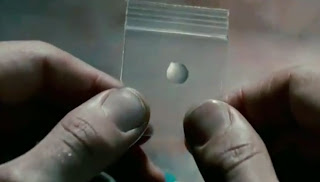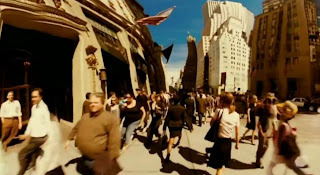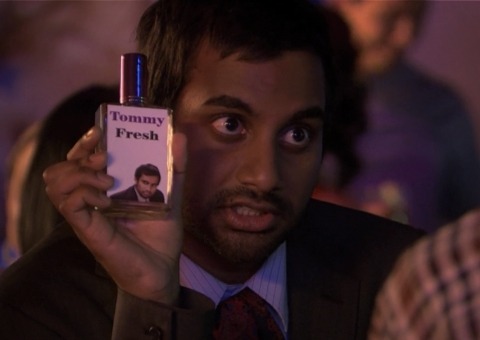Mood: "Conveys atmosphere, tone or emotion"

In this photo you can see a woman looking down. This is an indicator that she is less than content. The blank expression on her face suggests sadness. She is in the foreground and the main focus point of the photo. The background is all dark and one color. This keeps the attention on the subject of the photo and keeps from distracting the viewer. The darkness of the background also adds a mysterious element to the photo. It hides whatever is ahead and appears endless.
Goal: "Whatever The Character is Pursuing"

In this picture we can see a jumper in the middle of a jump over a bar. You can see his arms stretched forward, moving towards his goal. Both him and the bar are in the midground. In the background you can see a light post. This shows that hes at an event and not just practicing. The picture was taken during the jump leaving the audience in wonder of the outcome and not sure whether he makes it or not.
Backstory: "A story that promotes fuller understanding of the narrative"
This photo shows the ruins of a building and various objects. Just by first glance, the viewer can tell that something must've happened. The rust on the item in the foreground signifies the tragedy took place a while ago. It suggests that the one inhabited site has been forgotten and abandoned. The fallen structure in the foreground has the words "FUN for EVERYONE" printed on it. This shows that the site used to be a cheerful and happy place, but is now desolate. The background includes more trash and abandoned cars. This helps show that the disaster was widespread
Character: "Can be anyone or anything"
 The subject of this photo is an old man. He is sitting on a bench and drinking. By his clothes and appearance, you can tell that he is very poor and impoverished. The way he's looking away from the camera shows that hes ashamed of his lifestyle. If you look at his shoes, you can see that they are extremely worn out. This signifies that hes been walking a lot and has experienced many things. In the background we see some orange chairs. The brightness of color in the background brings to attention the lack of color in the subject.
The subject of this photo is an old man. He is sitting on a bench and drinking. By his clothes and appearance, you can tell that he is very poor and impoverished. The way he's looking away from the camera shows that hes ashamed of his lifestyle. If you look at his shoes, you can see that they are extremely worn out. This signifies that hes been walking a lot and has experienced many things. In the background we see some orange chairs. The brightness of color in the background brings to attention the lack of color in the subject.
Obstacle: "Anything or anyone in a characters way"
In this photo we see and old man with a sign. Although we cant fully read the sign, we can tell that the man in the picture is homeless and asking for money. Homelessness and poverty is the obstacle in this photo. Although hes dealing with an obstacle he is working on overcoming it. You can tell by the smile on his face. He looks cheerful even throughout hardship. In the background you can see chain link fences and weeds, which convey an urban setting.
Relationship: "A relationship between anyone or anything"
In this photo we see an extremely strong relationship between a homeless man and his dog. You can tell by how close the man holds the dog to him that he deeply cares about it. You can infer that by the blanket and trash that this man is homeless. Even though he living in some of the worse conditions he can still hold something close to him and feel happiness. The grey in the photo gives a depressing background and adds to how strong the relationship is. The photo is very to the point and has no distractions or defined background. This photo brings the message that, "No matter what your race, religion, social status, sexual orientation, or in this case what species, you are, we all need love".
Setting: "Any location or environment"
In this picture we see a snowy road. The road continues off the photo giving a sense of vastness. We don't know where the road ends or what is on the other side. On the right there is a strong light source that may be a setting sun. It brings along a feeling of calmness. The light may represent the end of a day or journey. In the background, you can see a sky that is full of clouds. This shows that it is darker ahead and that the path leads into the night.
The Unknown: "Can be anything unexpected, a twist"

There are many characteristics of the unknown portrayed in this photo. For example, the man in the photo is hidden by darkness. The subject cant recognize the person and their presence is a mystery. The camera angle shows the man from below making him look authoritative and powerful. There is one light source from above. The light from above is too bright to see beyond. This gives the photo a feeling of wonder as to what is past the light. Since there are no visual symbols or clues, anything can be behind the light, and this opens up for a twist. The dark tunnel gives a daunting feeling and gives the photo a scary and mysterious feel to it. The darkness hides any possible clues as to where to subject is.
Time: "Represents a time of day or within history"
In Foreground of this photo we see a post covered in tacks and staples. The camera has a heavy focus on the post. The staples and tacks once belonged to posters that are now gone. Each staple and tack represent moments in time. A tack may have belonged to a lost dog poster or a town event. The point of this photo was to show that time is always changing and that things, such as posters, come and go leaving behind remnants of their presence. In the Background we can see a street aligned with shops. This signifies that Time will keep moving on.
Discovery: "A key and potentially pivotal item, place. or truth that is discovered."

In this photo we see a young girl in the woods who has stumbled upon a small house built in a tree. The girl is in the center of the picture and one of the main focus points alongside the door. The photo is full of green, giving it a leafy and earthy feeling to it. This makes the girl in white and the brown door pop out. In The foreground we see the girl looking at the small house curiously. The whole outcome of her adventure in the woods may change now because of this discovery. Has she been looking for the house or did she find it on accident? These are questions the viewer may ask themselves.





















